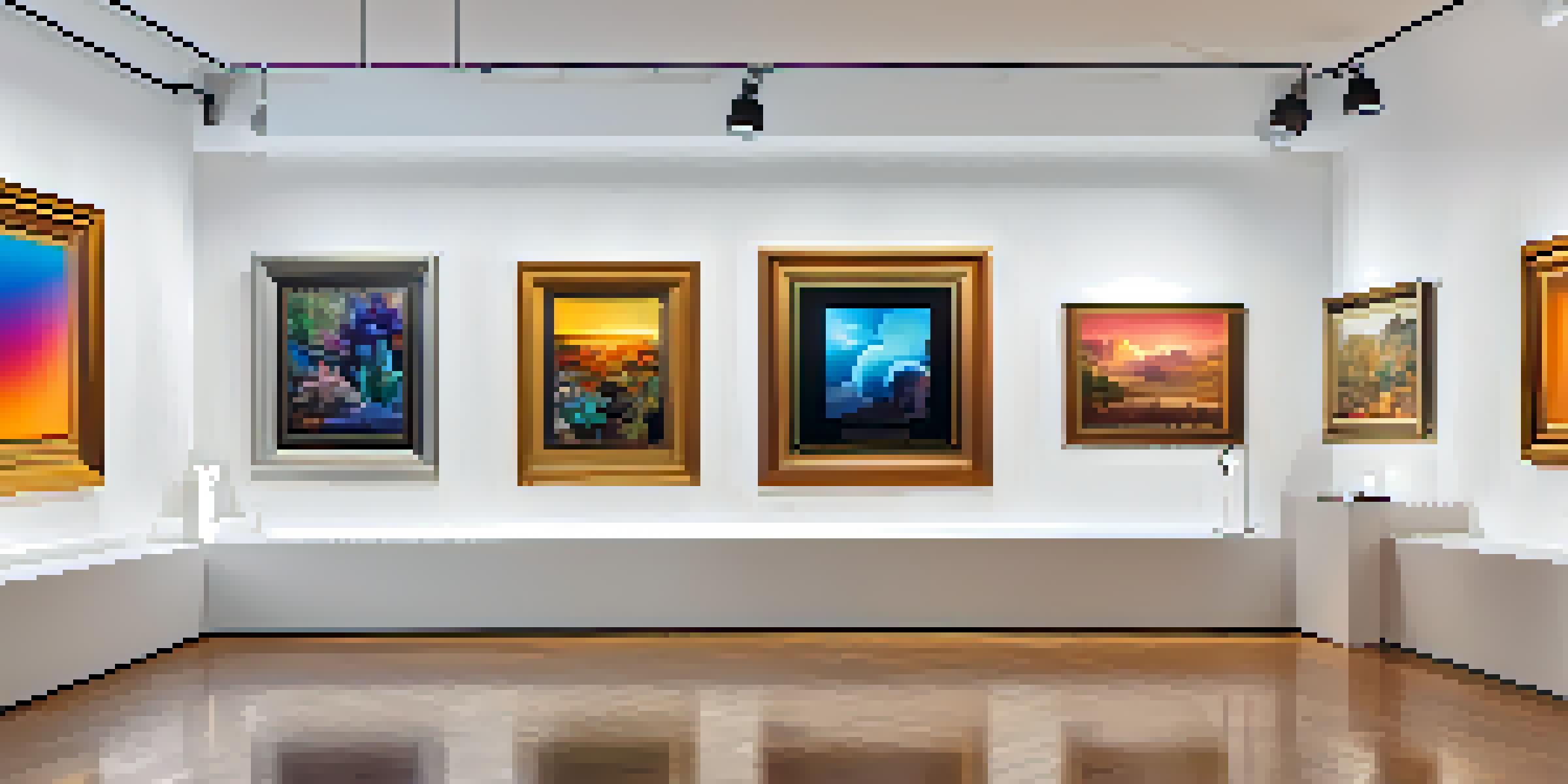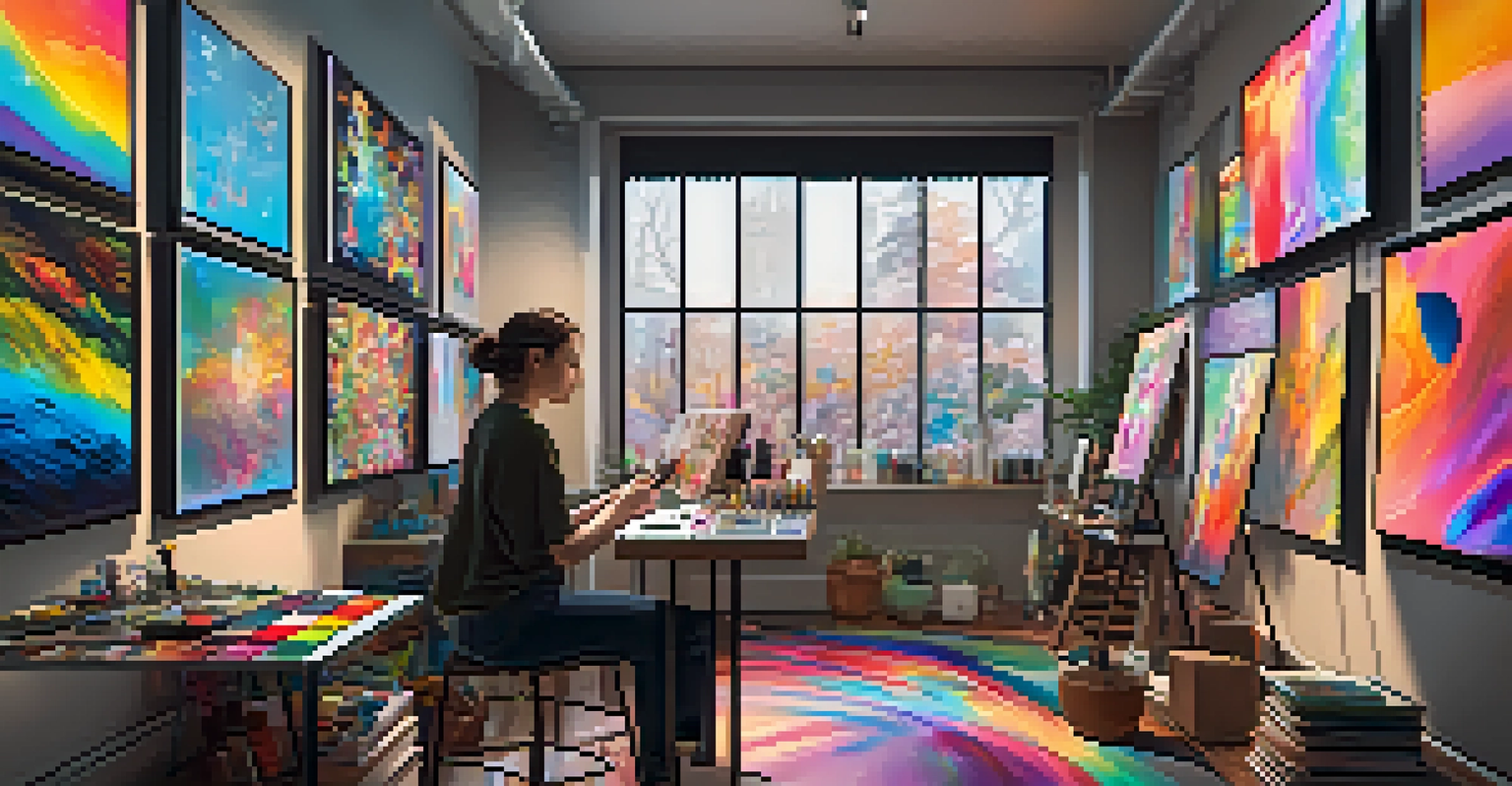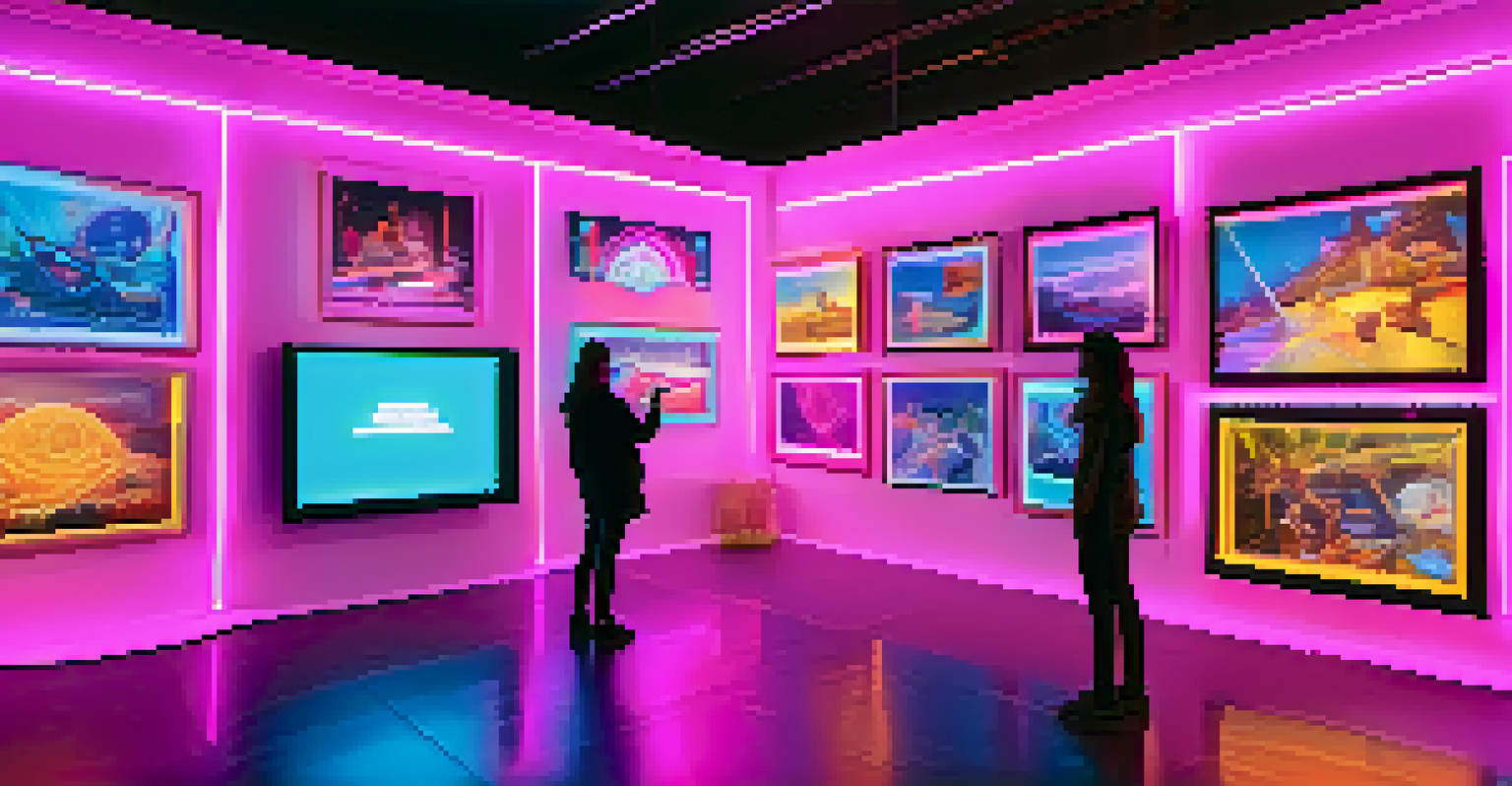NFTs and Digital Art: Revolutionizing Ownership and Sales

Understanding NFTs: The Basics of Digital Ownership
Non-fungible tokens, or NFTs, are unique digital assets verified on a blockchain. Unlike cryptocurrencies such as Bitcoin, which are interchangeable, each NFT holds a distinct value and identity. This uniqueness allows artists to authenticate and sell their work in the digital realm, ensuring that ownership is clear and secure.
Digital art is a new frontier for creativity, where technology and art intersect to create unique experiences.
NFTs have gained popularity for various types of digital art, including images, videos, and even music. Think of them as digital certificates of ownership that authenticate an artist's work. When someone purchases an NFT, they are buying the original version of that digital item, much like owning an original painting rather than a print.
Related Resource
By using NFTs, artists can establish a direct connection with their audience, bypassing traditional galleries and auction houses. This democratization of the art world empowers creators to set their prices and retain control over their work. As a result, the NFT market is reshaping how we perceive ownership in the digital age.
The Rise of Digital Art: A New Frontier for Creativity
Digital art has exploded in popularity, with platforms like Instagram and TikTok showcasing artists' work to global audiences. This surge has led to an increased demand for innovative expressions of creativity, making NFTs an appealing option for many artists. The ability to create art that can be owned and traded digitally is a game changer.

For many creators, NFTs represent a new income stream that didn’t exist before. Artists can sell their work directly to collectors, often at higher prices than traditional methods would allow. This shift not only benefits the artists but also fosters a vibrant community of supporters who invest in their favorite creators.
NFTs Redefine Digital Ownership
Non-fungible tokens provide a unique way for artists to authenticate and sell their digital art, ensuring clear ownership.
Moreover, the digital nature of NFTs encourages experimentation with new art forms. Artists are combining technology with traditional techniques, leading to captivating pieces that push the boundaries of what art can be. This new frontier fosters creativity and offers endless possibilities for expression.
How NFTs Are Changing the Art Market Landscape
The art market has historically been dominated by galleries, auction houses, and intermediaries. However, NFTs are challenging this traditional model by enabling artists to sell directly to buyers. This shift not only reduces costs associated with middlemen but also enhances transparency in transactions.
The blockchain is not just a technology; it’s a new way of thinking about ownership and authenticity in the digital age.
With the introduction of NFTs, collectors can verify the authenticity and ownership history of a piece through the blockchain. This level of transparency is crucial, as it builds trust between buyers and sellers. Collectors can feel confident that they are purchasing genuine art, free from the risk of forgery.
Related Resource
Furthermore, the NFT market has made it easier for emerging artists to gain recognition. Platforms like OpenSea and Rarible provide accessible marketplaces where anyone can showcase their work. This inclusivity is transforming the art world, allowing diverse voices and styles to flourish.
The Environmental Impact of NFTs and Digital Art
One of the significant criticisms of NFTs is their environmental impact, primarily due to the energy-intensive nature of blockchain transactions. Many NFTs are created on platforms that utilize proof-of-work systems, which require substantial computational power and, consequently, energy consumption. This has sparked conversations about sustainability within the digital art community.
In response to these concerns, several artists and platforms are exploring more eco-friendly alternatives. For example, some are adopting blockchain technologies that use proof-of-stake systems, which are significantly less energy-intensive. This shift not only addresses environmental issues but also appeals to eco-conscious collectors.
Art Market Disrupted by Direct Sales
NFTs enable artists to sell directly to collectors, reducing reliance on traditional galleries and promoting transparency.
As the conversation around sustainability continues, the digital art community is becoming increasingly aware of its carbon footprint. Artists and collectors alike are seeking ways to support initiatives that promote greener practices, ensuring that the revolution in digital ownership is also mindful of its impact on the planet.
Legal Considerations: Copyright and Ownership in the NFT Space
As the NFT market grows, legal questions surrounding copyright and ownership are becoming more prominent. When someone purchases an NFT, they acquire a token that represents ownership of a digital asset, but this doesn’t automatically grant them copyright. Artists retain the right to their work unless explicitly transferred, leading to confusion for buyers.
Understanding the distinction between ownership of the NFT and the copyright of the art itself is vital. Buyers may believe they own the artwork outright, but they typically only possess the token. This nuance is crucial for both artists and collectors to grasp, ensuring fair practices and clear expectations.
Related Resource
To navigate these complexities, artists are encouraged to create clear agreements outlining what rights are transferred with the sale of an NFT. This legal clarity helps protect both parties and fosters a healthier marketplace. As the NFT space matures, we can expect more standardized practices to emerge.
The Role of Marketplaces in NFT Sales and Distribution
NFT marketplaces play a crucial role in the buying and selling process, acting as the digital galleries of the modern art world. Platforms like OpenSea, Nifty Gateway, and Foundation provide artists with the tools to showcase and sell their work directly to collectors. These marketplaces cater to various niches, making it easier for artists to find their audience.
The user experience on these platforms is designed to be intuitive, allowing even those new to NFTs to navigate with ease. Features like browsing by category, viewing trending items, and participating in auctions create a dynamic environment for both artists and buyers. This accessibility is key to attracting a diverse range of participants in the NFT ecosystem.
Sustainability Challenges in NFTs
The environmental impact of NFTs has prompted the exploration of eco-friendly blockchain alternatives within the digital art community.
Additionally, marketplaces often incorporate social features, allowing artists to build communities around their work. By connecting with fans and fellow creators, artists can cultivate a loyal following that supports their endeavors. This sense of community enhances the overall experience of buying and selling digital art.
Future Trends: What's Next for NFTs and Digital Art?
As we look to the future, the potential of NFTs and digital art is immense. We may see an increase in collaboration between artists and brands, creating unique NFT collections that blend creativity with commerce. This trend could open new avenues for revenue generation and artistic expression.
Moreover, advancements in technology, such as virtual and augmented reality, could redefine how we experience digital art. Imagine walking through a virtual gallery filled with NFT art that you can interact with in real-time. This immersive experience could take art appreciation to a whole new level, attracting a broader audience.

Lastly, as the NFT market matures, we can expect more regulatory frameworks to emerge. These guidelines will help protect artists and collectors, ensuring a fair and sustainable market. The evolution of NFTs promises to continue shaping the art world in exciting and innovative ways.